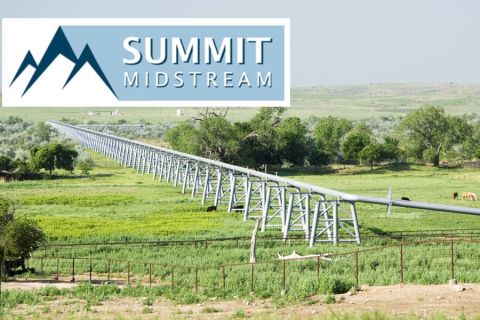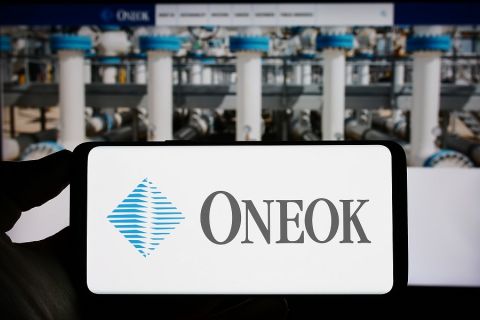
(Source: LuckyStep/Shutterstock.com)
Demand for LNG has started to turn around, a leading industry executive said during a recent webinar, but over the long term, the industry may struggle with a lack of supply.
“I’m probably more bullish on the long term than I was before and actually a little bit anxious because we are about to go into a bit of a supply shortage for the next four-ish years,” Meg Gentle, president and CEO of Tellurian Inc., said during a webinar hosted by Rice University’s Baker Institute for Public Policy. That’s because annual supply increases over the next four to five years will be significantly lower than the growth during the last four to five years.
“That’s going to happen at a time when the market is used to $2 [per million British thermal unit (MMBtu)] LNG and really trying to grow, displace coal and displace transportation fuels to bring cleaner air,” she said.
A former top executive at Cheniere Energy Inc., Gentle has been in the thick of the U.S. LNG sector’s development from importer to exporter. Despite the setbacks experienced by the oil and gas industry this year, Gentle said she had been fascinated to watch the LNG market behave as a true, mature commodity and energy source and watching it balance.
As COVID-19 ravaged Asian economies earlier this year, European imports rose and even exceeded LNG purchases in 2019 for a time. That LNG largely filled storage in Europe and backed out pipeline gas from Russia which ultimately was diverted to China.
European natural gas storage continues to build, though at a more moderate pace than it did in late May and June. That storage build has led to supply-side curtailment out of the U.S. and Australia, primarily, but also Russia and some of the other producing nations in smaller amounts, Gentle said.
‘’The U.S. balancing mechanism is very robust,” she said. “We have some of the largest storage capacity in the world, and we’re going into our own summer air conditioning season. We actually have increasing demand in this country for air conditioning load and, through the COVID quarantine having keeping people at home, actually balanced out and we have increasing gas usage in the U.S. for power gen and for coal displacement.”
Ally of Renewables
Displacing coal was a recurring theme during the webinar for Gentle, who views natural gas as complementary to renewable sources of energy for power generation. She acknowledged the risk to the gas market by the anti-fossil fuel movement but noted CO2 emissions from gas are half that of coal. Gas can also compensate for shortcomings in renewable supply, such as times when the wind doesn’t blow and the sun doesn’t shine.
“We have to work together in partnership to be able to increase our percentage of renewables which we wholeheartedly support,” she said. “In fact, natural gas can be that most reliable partner because it is a commodity now. It will have security; it has multiple producers and supply sources so that reduces the political risk on using it as a fuel.”
The ability to store gas, either in liquid or gas form, means that it will be there when customers need it. And if somebody else needs it, LNG tankers can take it there.
“It’s very flexible to allow renewable power and renewables in other sectors of energy to actually grow and flourish in a way that can be cost effective and can also be reliable for the grid,” Gentle said.
Partnership Approach
Financing major projects like Tellurian’s Driftwood LNG facility in Lake Charles, La., is moving in new directions, Gentle said. At about $1,000 per metric tonne, a project with capacity of 27.6 metric tonnes per year (mtpa) carries a price tag of more than $27 billion. The traditional financing for such a facility is to convince project finance banks that the investment was secure by locking buyers into 20-year or 30-year contracts.
The business, however, has seen markets gain liquidity to the extent that cargoes are bought on a regular basis for delivery in a month’s time or even six month’s time. Buyers of LNG are reacting to the market price, like buyers of crude oil, and are less interested in 20-year deals.
“The challenge right now is: what is that business model that allows 70% of that project to get funded by the bank, and the bank to make sure that they’re going to get paid back if there aren’t 20-year contracts?” she said.
Tellurian pursued a JV approach. Equity partners in Driftwood will get their LNG at cost, which will be the best price on the market. That helps them to move LNG into their market at competitive prices and allows Tellurian to move forward with the project as a partnership.
The concept extends to the feedstock, as well, with Tellurian partnering with a gas producer in the Haynesville Shale. That cost moves to the plant at cost, where it is liquefied and loaded onto a tanker for $3.50/MMBtu. In this plan, the LNG can be delivered to Asian markets at $5/MMBtu or less.
The troublesome part of the plan has been COVID-19 and the economic wreckage it has wrought globally. The price of U.S. benchmark Henry Hub mid-morning on July 27 was $1.79/MMBtu, but the price on the Asian benchmark Japan Korea Mark on July 24 was $2.57/MMbtu. That’s a long way from $5/MMbtu.
On June 16, Gentle announced during an investor presentation that Driftwood construction would be pushed back to first-half 2021 after its partnership agreement with Indian gas importer Petronet LNG did not come to fruition. Petronet returned to the table on July 21 and the two sides have until the end of the year to finalize the deal. Assuming sufficient agreements are in place, LNG production could begin in late 2024, with full capacity reached in 2026 or 2027.
The cyclical nature of the energy business bolsters the assumption that prices will rise again, and Gentle said in mid-June that she expects partnerships to finalize following COVID-19 when the Asian price climbs back above $5/MMBtu. The reliance on multiple markets speaks to the unique international nature of the LNG business.
“We work with our partners on that very low-cost basis and then the partnership becomes a very important component of geopolitical strengthening of ties,” Gentle said, “making sure we are partners in business and partners as nations for many decades to come.”
Recommended Reading
Kinder Morgan Sees Need for Another Permian NatGas Pipeline
2024-04-18 - Negative prices, tight capacity and upcoming demand are driving natural gas leaders at Kinder Morgan to think about more takeaway capacity.
Summit Midstream Launches Double E Pipeline Open Season
2024-04-02 - The Double E pipeline is set to deliver gas to the Waha Hub before the Matterhorn Express pipeline provides sorely needed takeaway capacity, an analyst said.
FERC Approves ONEOK Pipeline Segment Connecting Permian to Mexico
2024-02-16 - ONEOK’s Saguaro Connector Pipeline will transport U.S. gas to Mexico Pacific’s Saguaro LNG project.
Enbridge Announces $500MM Investment in Gulf Coast Facilities
2024-03-06 - Enbridge’s 2024 budget will go primarily towards crude export and storage, advancing plans that see continued growth in power generated by natural gas.
Midstream Operators See Strong NGL Performance in Q4
2024-02-20 - Export demand drives a record fourth quarter as companies including Enterprise Products Partners, MPLX and Williams look to expand in the NGL market.






